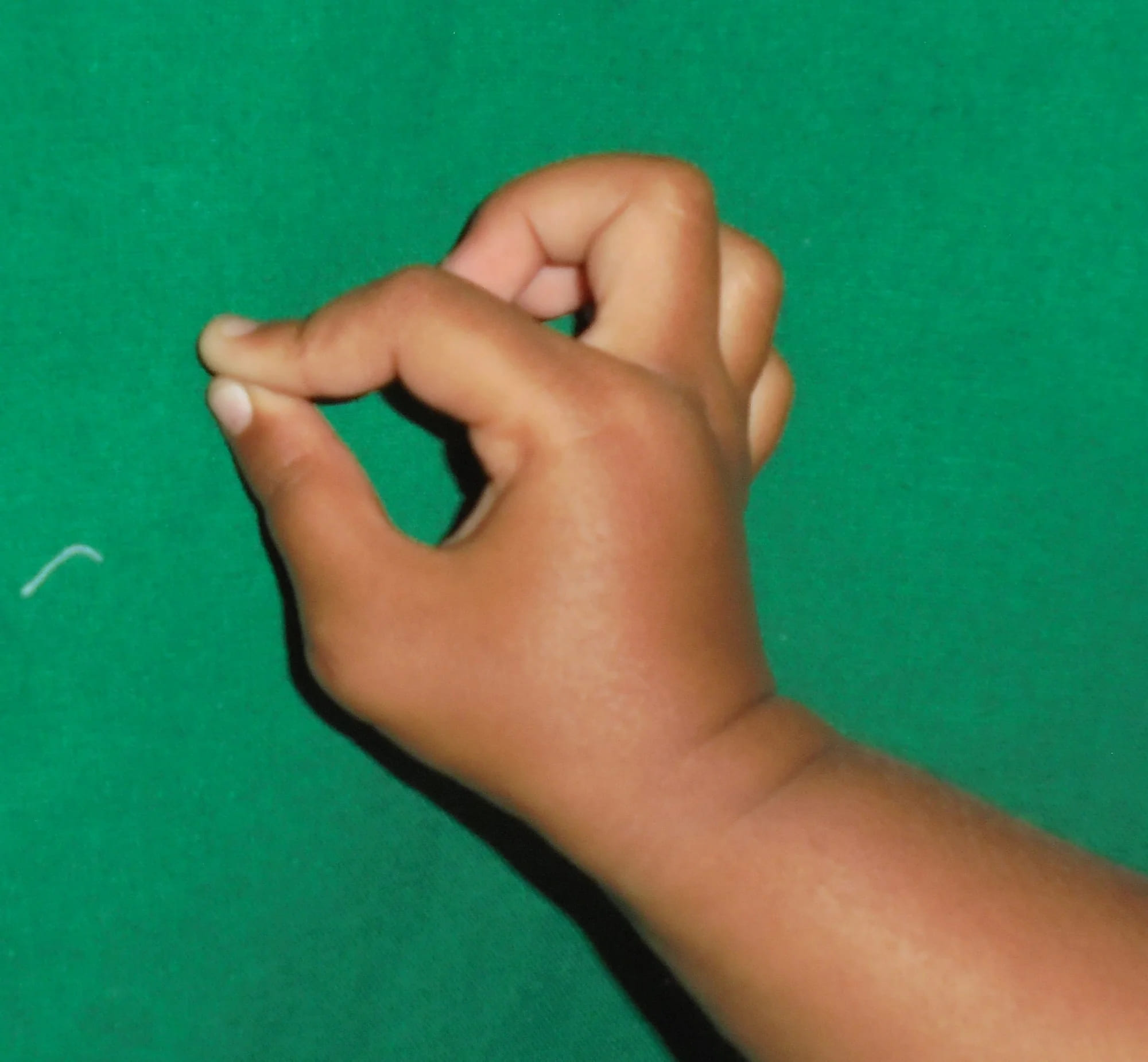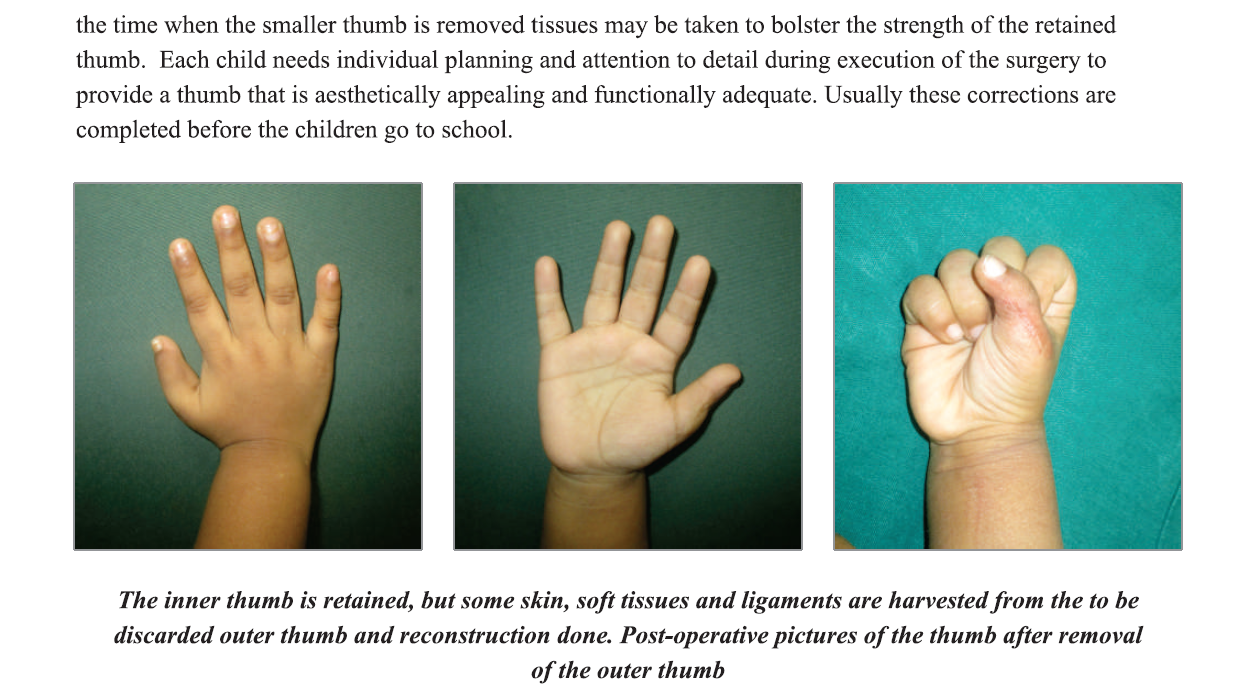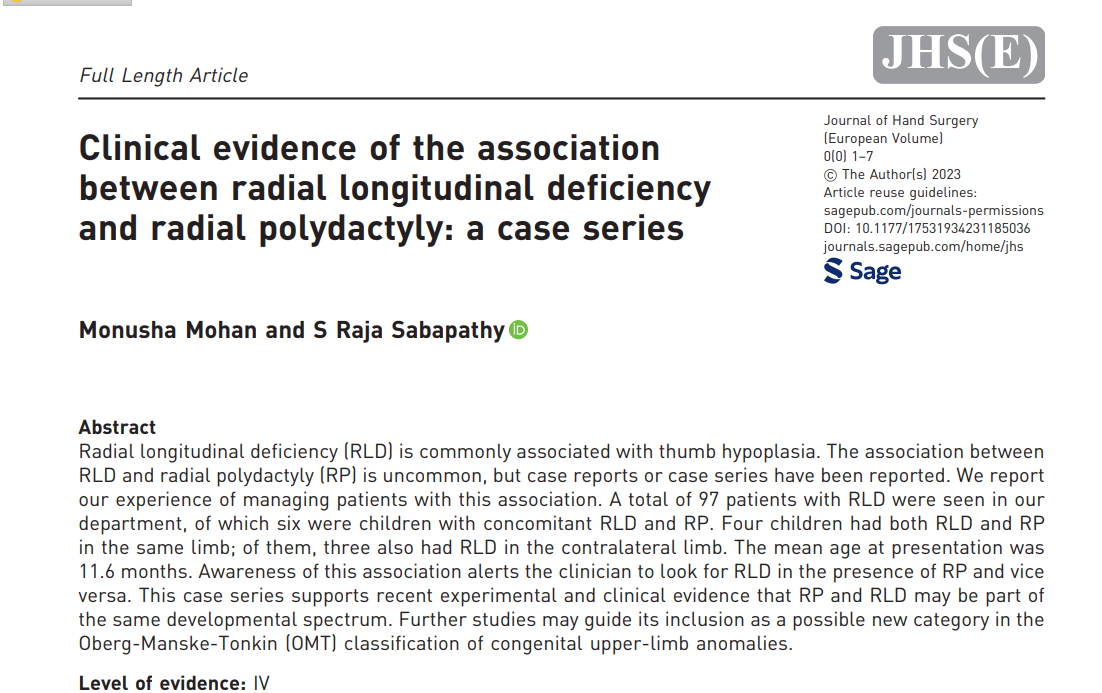Extra Thumb (Thumb Duplication / Radial Polydactyly)
Thumb duplication can vary from just a broad nail to varying stages of duplication to a completely formed extra thumb. The first thing we tell parents is that the duplicated thumbs are usually not of the normal size.
It can occur in one or both hands. It can be isolated or a part of syndromes. Syndromic association is found by detailed examination and laboratory tests. At Ganga, we have a team of specialized paediatricians, cardiologists and paediatric anaesthesiologists for evaluation to make the surgical procedures and post-operative period risk free.
Cause
An extra thumb is formed due to abnormal formation or differentiation in the radio-ulnar axis during hand formation. The incidence is found to be 0.08-1.4 per 1000 live births.
Treatment
Removal of the extra thumb is not as simple as parents think. Careful planning in needed in selecting the thumb to be retained. This will depend on the function of the tendons and joints, size or cosmesis. The type of procedure depends on the level of splitting too. The surgery may involve usage of a stainless steel K-wire.
The removal surgery is not an emergency. It requires planning as the skin and soft tissues of the thumb to be removed may be needed to cover the retained thumb. The procedure may be done at one year of age.
Post-Operative Care
The hand will be immobilised in an above elbow Plaster of Paris slab or cast. The wound will be inspected at 7-10 days, under anaesthesia if required. The steel wires will be removed at 6 weeks from surgery.

Pre OP








